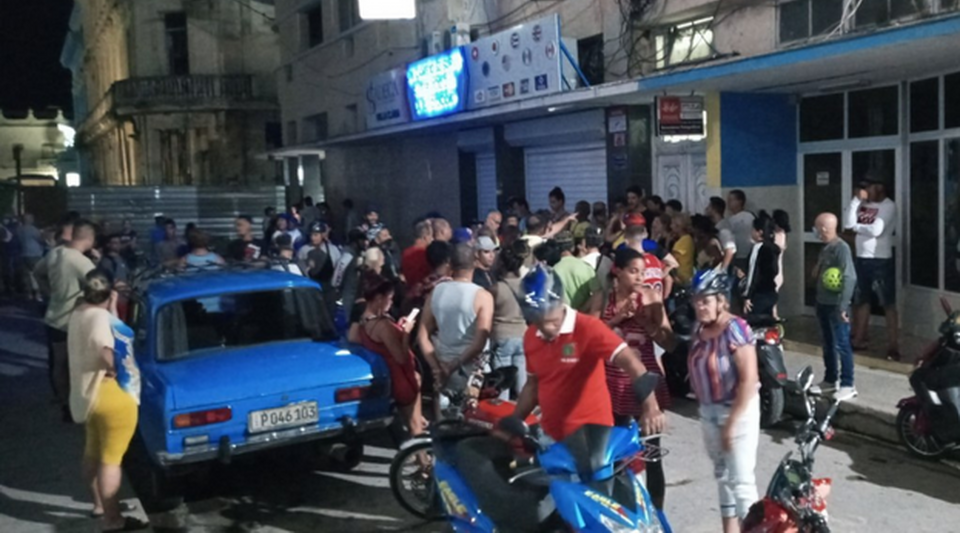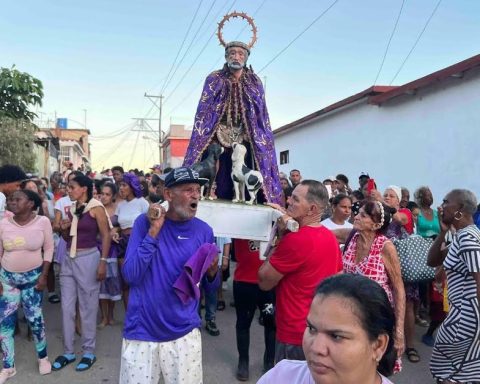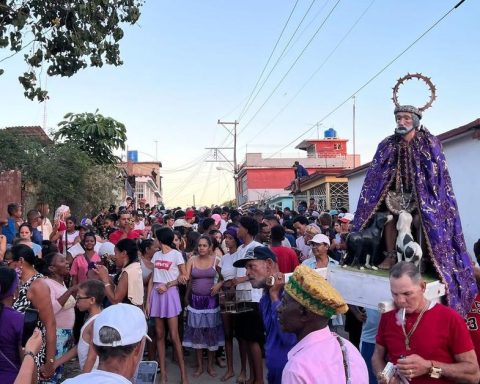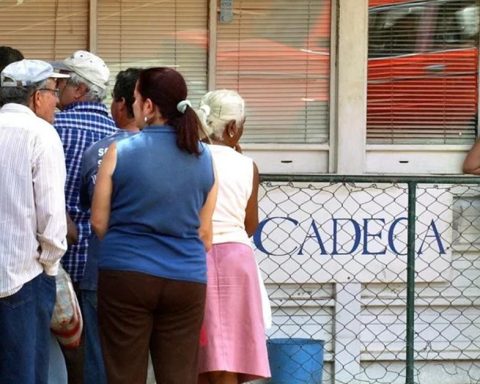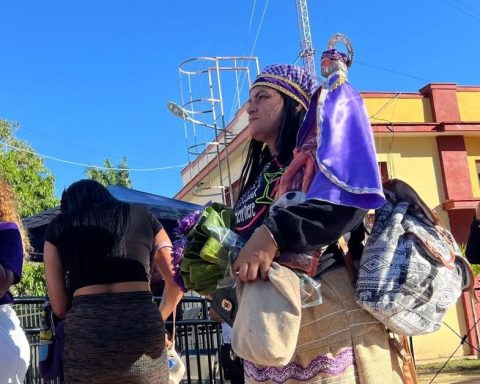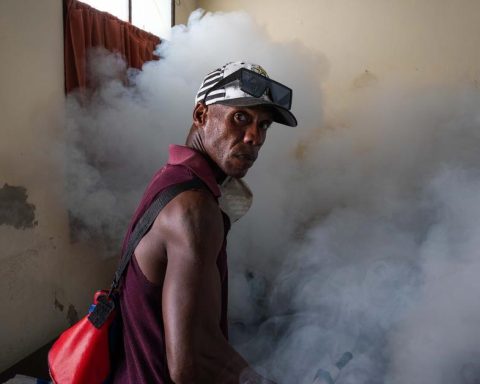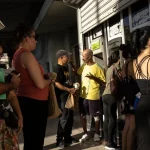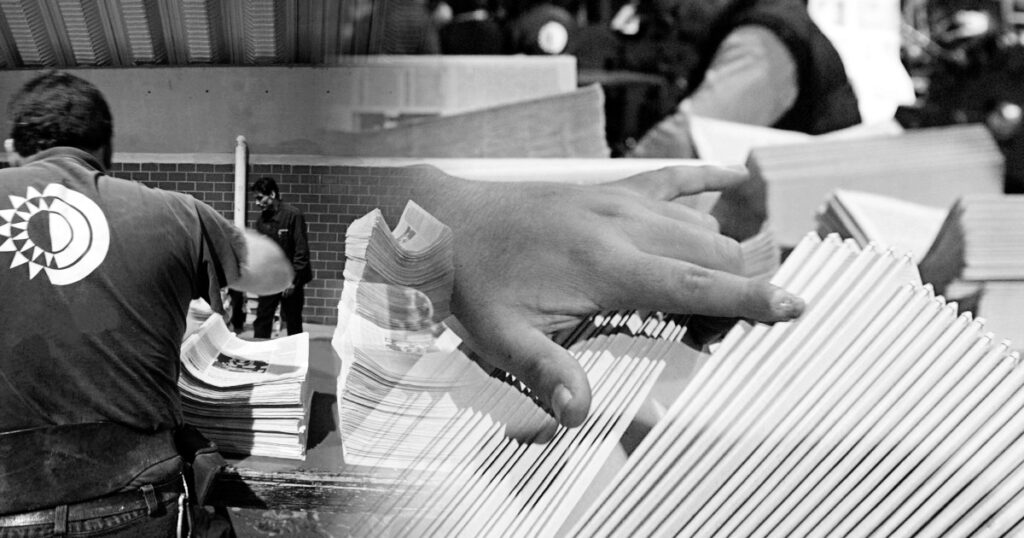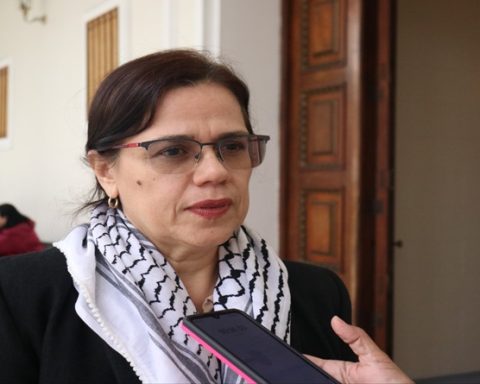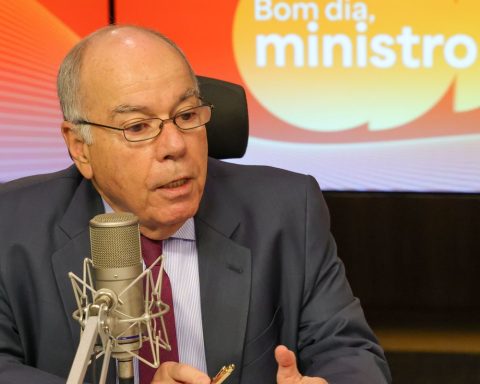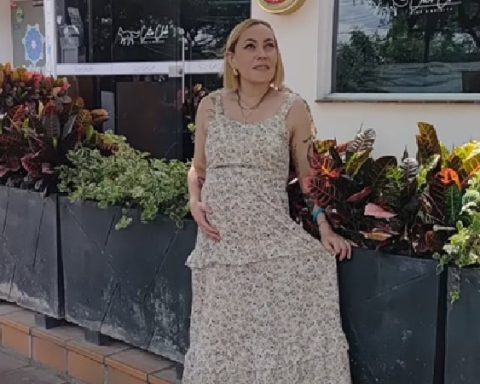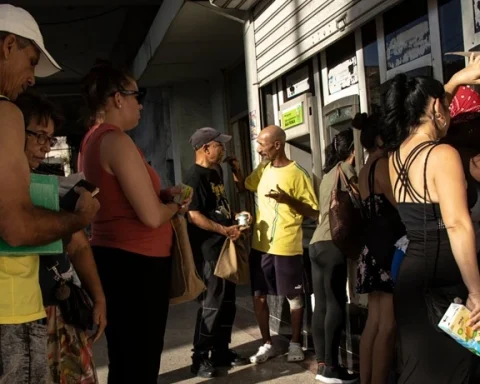The night begins to cool down over Santa Clara and, after lunch, the coleros They cross Vidal Park towards the exchange house (Cadeca). The custom is new but the method is as common as the poverty and underdevelopment of the Island: endure all morning to guarantee one of the first places in the queue.
The loot: the one hundred dollars “per head” that the Government promises to sell to whoever reaches a place. Like an anthill, the people of Santa Clara barricaded themselves during the early hours of this Saturday at the intersection of Cuba and Tristá streets.
It is a central and crucial corner for the movement of the city, interrupted however by a long zinc fence, which slows down traffic. The inhabitants of the city are accustomed to skirting the obstacle, which “protects” them from the ruins of the old Hotel Florida, to reach the Cadeca and the branch of the Banco de Crédito y Comercio.
“Tremendous Show was armed that night,” he tells 14ymedio one of his readers in Santa Clara. “More than a hundred people waiting and everything was a mess. One guy started shouting that it was cheeky and that he couldn’t take it anymore.”
At eleven o’clock at night, says the man, the atmosphere was already “warmed up”. From afar, in the park, the police did not lose foot or step to the coleros. “It is normal for them to patrol that area and, from time to time, they intercept a drunk or an unsuspecting university student and ‘invite’ them to enter the guasabita“, Add.
The Police did not lose foot or step to the ‘coleros’. “It is normal for them to patrol that area and, from time to time, they intercept a drunk or an unsuspecting university student and ‘invite’ them to enter the ‘guasabita'”
The guasabita It is the name that the people of Santa Clara give to a small gray bus where the officers improvise their “interrogations”. “From there you get out on a stretcher,” says the man, “that’s why the coleros They also avoid it.
But not even a hypothetical beating or a surprise arrest stops those who must exchange their dollars. In Cadeca, the mechanisms of a gear that nobody fully understands and that works based on traps, tricks and bribes begin to turn.
The fundamental rule: keep the ground and be aware of other people’s movements. The quintessential euphemism, “watch the tail”, is the card up the sleeve of those who appear and disappear, are exchanged with another, or double their place under all kinds of pretexts.
The “dollar queue” is confusing and exhausting, with the added danger of knowing that everyone who enters or exits it has money in their pockets, which tempts the city’s highwaymen and robbers.
“I’ve even gotten scared of queuing,” admits the man, who says he feels the same neurosis at Cadeca as he does in a line for chicken, coffee, or cigarettes. The outdated sale of foreign currency has become one more business of the informal market.
In Cadeca, the mechanisms of a gear that nobody fully understands and that works based on traps, tricks and bribes begin to turn
“But make no mistake,” he adds, “this is a small-time business, the ‘mafia’ of Santa Clara is not here. This is a matter of the same people who ‘fight’ for a few pounds of meat or some cigars. The idea is spending time that others can’t or won’t spend. That’s why they take a percentage.”
At the moment of greatest agony, when there is no more desire to shout or protest, the sun rises. Cadeca workers, with great parsimony, ventilate the establishment and begin to call the first numbers. But nothing guarantees that there will be dollars to cover the demand.
“Everyone knows that you can spend the early morning there and that everything is for pleasure,” concludes the man, “but it is what it is. This is the only country where you can make a living waiting in line.”
Those who read the daily reports of the official press will not be able to detect any abnormality. With subtlety, the Government is recalibrating the balance of exchange: every day it sells the most expensive dollar, but demands to buy it at the lowest possible price.
Meanwhile, exchange rates have skyrocketed in the informal market. 150 pesos reached the price of the dollar this Saturday, according to the monitoring of the digital media The touch. Those who experienced currency instability during the Special Period were quick to recognize that this was the figure at which the dollar came to be valued during the previous crisis.
At 149 and 148 pesos, respectively, the euro and the Freely Convertible Currency (MLC) almost touch the threshold of the US currency. With these figures, phrases such as “recover the purchasing power of wages in Cuban pesos” or “single exchange rate”, formulated by Minister Alejandro Gil Fernández, are already terrible economic humor jokes.
________________________
Collaborate with our work:
The team of 14ymedio is committed to doing serious journalism that reflects the reality of deep Cuba. Thank you for joining us on this long road. We invite you to continue supporting us, but this time becoming a member of our newspaper. Together we can continue transforming journalism in Cuba.
